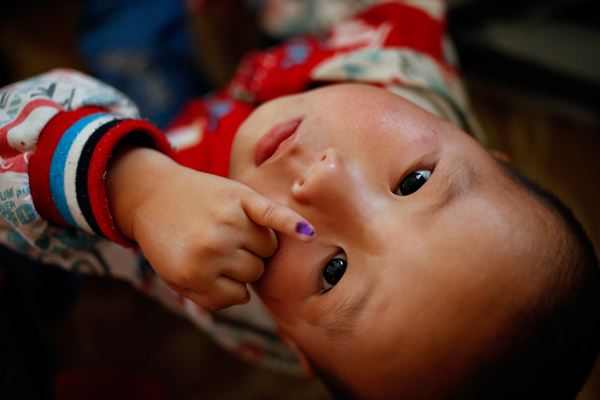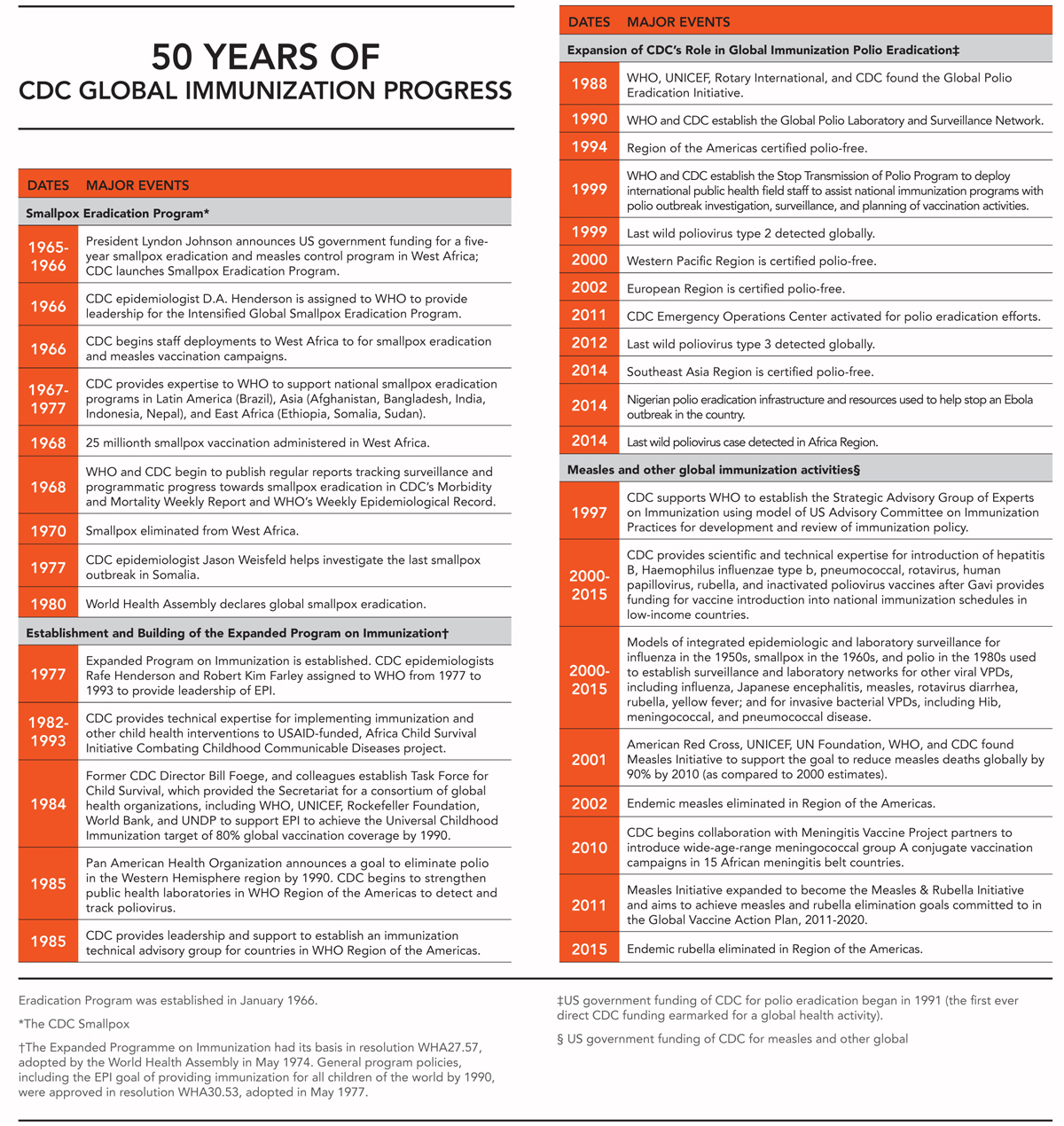CDC’s Global Immunization Plan

The Global Immunization Division is on a mission to disrupt immunization business as usual. Alarmed by the sluggishness in measles and Rubella elimination globally despite an affordable measles/Rubella vaccine, and the other unmet midterm goals of the Global Vaccine Action Plan: 2011-2020, GID is paving the way forward with a road map developed with 17 CDC divisions involved in immunization.
CDC’s 50 years of global immunization leadership, is proof that disease control, elimination, and eradication is not only possible but vital for prosperity. The roadmap ― CDC’s Strategic Framework for Global Immunization, 2016 – 2020, outlines the principles and strategies for advancing five public health targets:
- Eradicating polio
- A world free of measles and rubella
- Ending deaths caused by vaccine-preventable diseases among children under five years of age
- Reducing chronic disease and cancer deaths from VPDs
- Improved VPD outbreak detection and response
Achieving these targets would save lives and end shgtfhard capital assets acquired through polio eradication efforts toward Global Vaccine Action Plan: 2011-2020 goals. In particular, national and subnational vaccine coverage targets and measles/Rubella elimination targets.
No doubt, many involved in global health will see the efficiency of routine immunization programs, birth registries, multi-purpose labs, and adaptable surveillance data platforms across vaccine-preventable diseases (and those with promising vaccines). Likewise, polio vaccine workers, labs, and many CDC field programs already engage in cross-disease activity.
However, the framework establishes this diagonal approach as CDC’s strategy going forward, beginning with implementing measles and rubella elimination strategies that strengthen immunization programs and identify gaps in overall health systems.
The framework also underscores CDC’s philosophy of collaborating with other country governments and partners.
For example, it highlights CDC’s core capacities to strengthen immunization programs by:
- Providing scientific expertise in infectious disease epidemiology, surveillance, and laboratory science
- Implementing and evaluating evidence-based prevention strategies and practices
- Providing quality-assured, public health laboratory systems
- Building public health institutional and workforce capacity.

The framework ascertains the important role of partners to promote a harmonized approach to immunization program implementation under country government leadership in order to achieve the full impact of vaccination. It reinforces CDC’s commitment to strengthening national immunization program capacity through global, regional, and country-level immunization partnerships with ministries of health, multilateral organizations, and other US Government agencies. And it defines guiding priorities aimed at facilitating nations’ ownership of and financial commitment to ensuring its health system is capable of preventing, detecting, and stopping disease outbreaks.
These next five years are crucial to successfully achieving polio eradication, and exciting as there is so much potential for substantial progress to end suffering and death caused by vaccine-preventable diseases. GID looks forward to collaborating with the many who are dedicated to advancing global immunization goals, and fulfilling CDC’s immunization vision of a world with healthy people protected from vaccine-preventable disease, disability, and death.